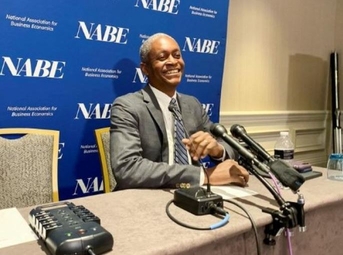On Tuesday, officials from the US Federal Reserve reaffirmed their support for additional interest rate hikes as a means of containing inflation. The influential chief of the New York Fed stated that the central bank will likely need to get its policy rate “somewhat above” 3.5% and maintain it at that level through the end of 2023.
John Williams, the head of the New York Federal Reserve, was quoted as saying to the Wall Street Journal that “I see us needing to kind of hold a policy stance” in order to “push inflation down, bring demand and supply into alignment.” This process is going to take longer and will continue through next year. “It’s going to be some time before I would expect to see changes of rates lower,” based on what I’m seeing in the inflation numbers and what I’m seeing in the economy.
Fed Chair Jerome Powell made it clear last week that he and fellow monetary policymakers are prepared to raise borrowing costs as high as necessary to restrict growth and reduce inflation that is currently running at more than three times the Fed’s 2% target. The Fed began what has become the sharpest round of rate hikes since the 1980s. The Fed began this round of rate hikes in March. Since then, it has become the steepest round of rate hikes since the 1980s.
He said that doing so would most certainly result in a weaker labour market as well as suffering for people and companies; nevertheless, he stated that allowing inflation to continue high would result in far more severe harm.
Williams, who as vice chair of the Fed’s rate-setting panel plays a key role in guiding monetary policy, stated that the decision of the central bank on whether to deliver a third consecutive 75-basis-point rate hike next month or a smaller half-point hike will depend on the incoming data. This data includes the monthly jobs report that will be released on Friday as well as the consumer price index reading that will be released just days before the September 20-21 meeting. Williams said that the decision will depend on whether the
Williams said that the decision that would be made in September will also be contingent on the opinions of policymakers over where they believe interest rates will need to be by the end of the year.
The current goal range for the Fed funds rate, which is also known as the benchmark rate, is between 2.25 and 2.50%.
In June, when the central bank last provided a summary of policymakers’ predictions for the direction of interest rates, US central bankers anticipated that rates would increase to 3.4% by the end of the year.
The price of an even greater rise is being factored into the financial markets. Traders’ expectations, as reflected in futures contracts connected to Fed policy, are that interest rates will increase by an additional 1.5 percentage points by the end of the year. This year there will be three more meetings to determine policy, the next one being in the following month.
Price pressures are nonetheless “stubbornly broad,” according to Bostic, despite the fact that inflation fell to 6.3% in July according to the Fed’s preferred gauge, which is down from 6.8% in June.
Other statistics suggest that crucial areas of the economy continue to be constrained, such as the data that was issued on Tuesday indicating that the number of job postings continued to be high during the month of July, which may be a sign of sustained wage pressures.
The overall picture, according to Bostic, is “fuzzy,” and although he is focused on the trajectory of inflation, he is also attentive to the fact that moving too fast to increase interest rates also has dangers. Bostic dubbed the entire picture “fuzzy.”
According to the President of the Richmond Fed, Thomas Barkin, it is abundantly evident that the Federal Reserve has to raise interest rates; however, just how much the rates will increase next month will depend on the future data on employment and inflation. Barkin told Yahoo Finance, “I’m not going to prejudge anything,” adding that the Fed does need to push rates “into restrictive area” in order to bring inflation down.

